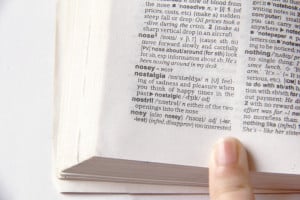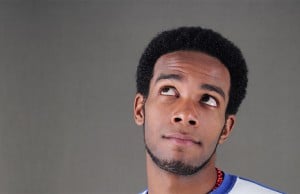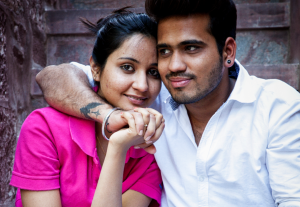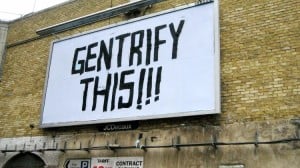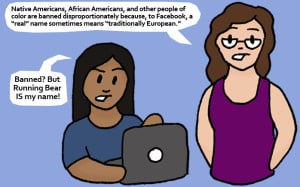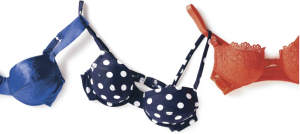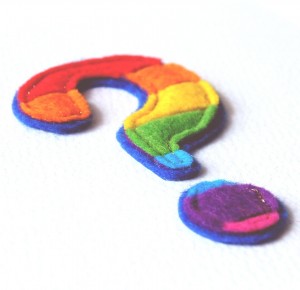
Source: Emerge Into You
I have a very active Tumblr ask box.
As an out-and-proud sexuality educator with a faithful following of mostly young people, that’s to be expected.
The world is not kind to adolescents and young adults looking to understand the inner workings of their sexuality, and so when they find a personable person who has the answers – and can ask anonymously, at that! – they latch on.
And one question that I get asked repeatedly looks something like this: “I think I might be bisexual. I like boys, but I also kind of have a crush on this girl in my math class. But I’ve never dated a girl before, so my friends say that I can’t be bi. I’m really confused. What am I?”
Or this: “I’ve come to the conclusion that I don’t feel romantic or sexual attraction to anyone, regardless of their gender. Is there something wrong with me? Is there something to call this? What can I do?”
All of these questions have two important things in common: 1) They clearly state what their feelings and attractions are, and 2) their anxiety is almost entirely focused on labels.
People aren’t asking me to help identify their feelings. They’ve already got a steady hold on that. They want help figuring out what to call those feelings – and that’s a very different beast, indeed.
So let’s talk about it.
Sexuality 101: What Is It Anyway?
Generally, when laypeople use the word “sexuality” (as in “What’s your sexuality?”), they’re conflating it with what we, people in the field of Human Sexuality, actually call “orientation” or “identity.”
They’re not the same.
Here’s why: A person’s sexuality encompasses a lot!
It’s made up of five major components: Sensuality, Intimacy, Sexual Health and Reproduction, Sexualization, and Sexual Identity. And even those components are broken down into many others, which develop over time, are affected by our environments, and are relatively fluid.
So, really, when a person asks “What’s your sexuality,” they could be asking about a myriad of things – from body image to physiology to our feelings of vulnerability to our pregnancy status.
We all have a sexuality that is made up of much, much more than who we’re into.
And even when we’re just talking about the orientation stuff, there’s actually more to consider than what the average person thinks.
Scales and Grids and Confusion
Ask anyone who’s ever taken an introductory psychology class or volunteered for an LGBTQIA+ organization who Alfred Kinsey is, and they’ll probably at least be able to tell you one thing: He’s that dude that made up that scale!
And yes, he did. Among many, many other things, he did.
The Kinsey Scale, in short, is simply a line graph numbered zero through six that helps illustrate the kinds of attractions that people feel with zero representing “Totally into the Same Gender” and six representing “Totally into Another Gender.”
Three, which is in the middle, represents “Completely an Equal Opportunity Employer.” And one, two, four, and five are basically saying, “I’m Mostly This, But I’m Also a Little of That.”
These aren’t the labels that Kinsey used, by the way. This is a Fabello original.
Contrary to popular belief, though, there isn’t a test to place you on the scale. You just kind of place yourself, based on what your feelings are: “Oh, I’m kind of into men and women, but I think I like women a little bit more. I guess I’m a four.”
But then, in the late 1980s, this dude named Fritz Klein came along and was like, “Hold on. This scale kind of sucks. Sexuality is more complicated than this linear graph makes it out to be. I’ll expand upon it” (not an actual quote).
And so he did.
He created the Klein Orientation Grid, which added variables to the equation.
Instead of just asking a blanket question of “To whom are you sexually responsive?” Klein’s model asks seven questions – including “With whom have you have sex?” and “Which gender do you socialize with?” – and has you consider your past, present, and future ideals.
This gets at the fact that sexuality is a complicated topic – which is great – but the end result is a grid that’s—well—complicated.
And yet, these are the only two graphic representations of sexual orientation that most people know, if they know any at all – either a super simplified version or a way too complex one!
And so, if you don’t mind, I’d like to take a second to celebrate…
The Birth of the OBI Model
In 2010, Don Dyson and Brent Satterly (full disclosure: they are both professors in the program through which I obtained my Master’s degree) came along and published a paper and said, “We are going to create the model to end all models” (also not an actual quote).
And the OBI Model was born, separating the following related dimensions: Orientation, Behavior, and Identity.
And this is what we want to use to have this conversation – not those other scales.
So what does it all mean, though?
Orientation
In short, your sexual orientation describes the gender(s) to which you feel sexual attraction or about which you have sexual fantasies.
Who do you find yourself attracted to? When you’re on a crowded bus and find yourself inadvertently scanning for cuties, who are you looking for? When you’re enjoying some sexy alone time in your bed, who do you find yourself thinking about? What kind of porn do you watch?
This is what we’re talking about when we say “orientation” – the relatively subconscious, automatic feelings of attraction that you have on sexual and romantic levels.
Behavior
Your sexual behavior refers to the gender(s) that you engage in sexual activity with.
Who do you have sex with, go on dates with, present yourself in public with? When you do your ‘Who I’ve Had Sex With’ roll call, which genders are called out?
When we discuss behavior, we’re honestly talking about just that – the way that you behave.
And it’s important to note that the way that you behave doesn’t necessarily reflect your orientation.
For example, you could be sexually attracted to both men and women (orientation), but not have found someone of the same gender to try dating or sleeping with yet (behavior).
Or you could be solely attracted to the same gender (orientation), but be in the closet and therefore only dating and sleeping with another gender (behavior).
The way that you behave sexually can be influenced by many internal and external factors. Just because you behave one way doesn’t mean that you consider yourself oriented that way.
And the whole “How do you consider yourself?” question is significant.
Because…
Identity
A person’s sexual identity is the label with which the person identifies.
What do you want to call yourself? When you look in the mirror, which word(s) do you use to describe yourself that feel good? Are there any at all?
The concept of identity is simple, although it is often misunderstood.
Your identity – plain and simple – is how you see yourself.
That’s it.
It isn’t necessarily a word to describe your attractions; it isn’t necessarily a word to describe your behaviors; it’s just a word that you can choose to use to describe who you are.
And no one else gets a say – not even sex educators on Tumblr.
The problem is that our culture tends to give us only three words to use – Gay, Straight, and Bisexual – which is totally ridiculous. There are way more stops on the Sexual Identity train than just those.
And that’s where a lot of confusion comes into play.
People understand their orientation (who they’re attracted to). And people understand their behavior (who they’ve been sexual with). What they have trouble with is their identity (what to call themselves) if they don’t neatly fit into one of those three boxes.
And if you’re like me and don’t find yourself comfortably fitting into any of those labels, you can be left with this panic like, “WELL WHO AM I AND WHAT IS LIFE AND IS THERE EVEN A GOD?”
And that can be really scary.
So Now What?
1. Focus on Naming Your Feelings
At the end of the day, what’s most important here is to understand who you want to get jiggy with (if anyone at all). If you can do that, the stressful part is actually already over.
Because knowing who and what you like is a big deal. Not everyone can do that. Not everyone is even ready for that step.
If you can confidently say “This is who I want sexually and romantically, and this is who I don’t,” then you’re way ahead of a lot of other people! And you’ve got your shit sorted enough to start putting yourself out there as a prospect.
2. Let Your Identity Come to You
Here’s the thing about labels: They’re only useful insofar as they’re useful. Otherwise, they’re kind of a hassle.
At the end of the day, we can’t put people into boxes. We want to because our brains are wired to compartmentalize, but sometimes we need to be like, “Shut up, brain. I’ve got this.”
Feel like the ~Sexual Identity Trifecta~ of Gay, Straight, and Bi doesn’t work for you? Not sure you’re comfortable with Queer either?
Cool.
You can find another one. There are tons of labels out there to choose from – from heteroflexible to biromantic to demisexual – that might make more sense for you.
And if you still can’t find something? That’s alright. Make up your own damn label.
Not having a word for yourself doesn’t mean that you don’t have an identity. It just means that your label is currently under construction.
And honestly, whose isn’t?
“Self-actualization” is high on Maslow’s hierarchy for a reason: It’s tough to get to.
Sooner or later, a word will creep along that feels right for you. And maybe later on in life, you’ll want to abandon it to adopt a new one.
The point is: Whatever works for you works for you. Go with it.
***
I’m not going to tell you that labels are for soup cans, although I understand that sentiment.
As a person who struggled for most of her life trying to find a label (and therefore has had to come out, like, three times already), I totally understand the desire to have your feelings validated with a label that says, “This Is Who I Am, and My Experience is Valid.”
But the secret that no one is telling you is this: This is who you are, and your experience is valid – with or without a label affixed.
Want to discuss this further? Login to our online forum and start a post! If you’re not already registered as a forum user, please register first here.
Melissa A. Fabello, Editor of Everyday Feminism, is a domestic violence prevention and sexuality educator, eating disorder and body image activist, and media literacy vlogger based out of Philadelphia. She enjoys rainy days, Jurassic Park, and the occasional Taylor Swift song and can be found on YouTube and Tumblr. She holds a B.S. in English Education from Boston University and an M.Ed. in Human Sexuality from Widener University. She can be reached on Twitter @fyeahmfabello. Read her articles here and book her for speaking engagements here.
Search our 3000+ articles!
Read our articles about:
Our online racial justice training
Used by hundreds of universities, non-profits, and businesses.
Click to learn more
Most Read Articles
- « Previous
- 1
- …
- 30
- 31
- 32





